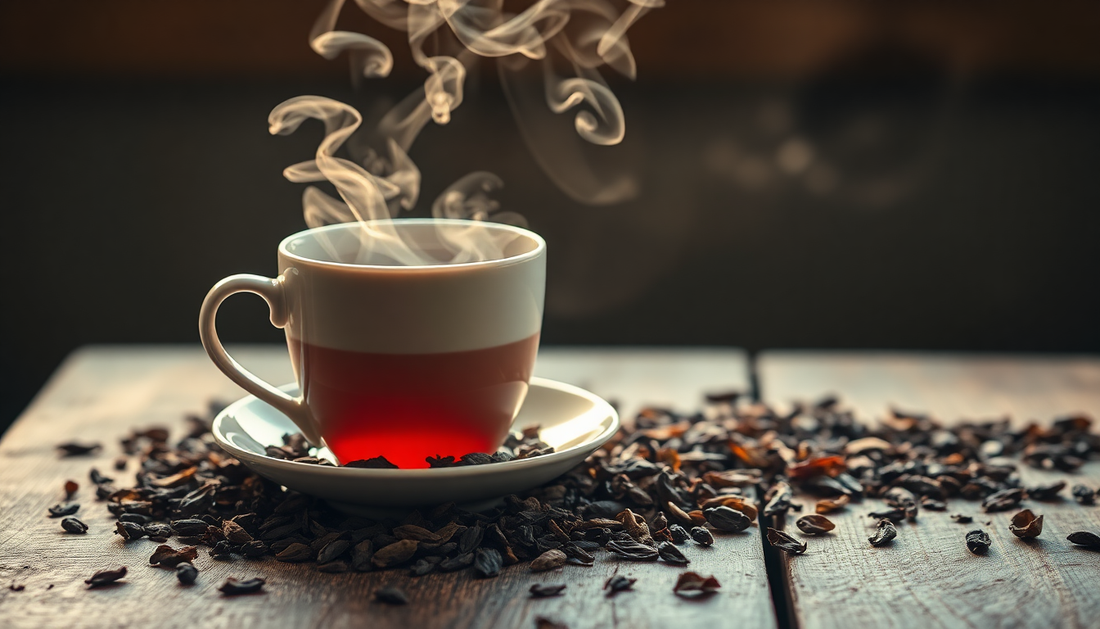
Unlock the Secrets of Tea Tasting: A Beginner's Guide to Exploring Flavors and Aromas
ZenBrew Tea StudioIn the ever-evolving world of tea, the art of tasting and appreciating this ancient beverage has become a captivating pursuit for enthusiasts and newcomers alike. At ZenBrew Tea Studio, we believe that tea tasting is not just about discerning flavors, but a journey of self-discovery, where the senses converge to unveil the profound complexities of this timeless elixir.
The Importance of Tea Tasting
Tea tasting is more than just a hobby; it's a gateway to a deeper understanding of the tea world. By honing your senses and developing a keen palate, you'll unlock a new dimension of pleasure and appreciation for every sip. Whether you're a seasoned tea connoisseur or just embarking on your tea journey, mastering the art of tea tasting will enrich your experience and open your mind to the boundless possibilities that tea has to offer.
The Basics of Tea
Before we dive into the art of tea tasting, it's essential to have a solid foundation in the world of tea. Tea, in its most basic form, is the leaf of the Camellia sinensis plant, which can be processed in various ways to produce different types of tea, such as black, green, oolong, and white. Each type of tea has its own unique characteristics, from the delicate and grassy notes of a freshly brewed green tea to the robust and malty flavors of a well-aged black tea.
The quality of tea is influenced by a multitude of factors, including the terroir (the environmental conditions of the growing region), the processing methods, and the storage and aging conditions. Understanding these factors will help you appreciate the nuances and complexities that make each tea truly unique.
Preparing for Tea Tasting
Before you embark on your tea tasting journey, it's important to have the right equipment and create the perfect environment. At ZenBrew Tea Studio, we recommend investing in a set of high-quality teaware, including a gaiwan (a traditional Chinese tea brewing vessel), a tea pitcher, and a set of tasting cups. Additionally, ensure that you have access to fresh, filtered water and that the tasting area is free from any strong odors or distractions.
The Five Steps of Tea Tasting
The art of tea tasting can be broken down into five distinct steps, each designed to engage your senses and unlock the hidden depths of the tea.
Visual Assessment
Begin by carefully examining the dry tea leaves, taking note of their color, size, and overall appearance. This initial step will provide valuable clues about the tea's origin, processing method, and potential flavor profile.
Aroma Evaluation
Gently warm the tea leaves and inhale the aroma, allowing it to fill your senses. Pay attention to the nuances and complexities of the scent, as this will be a crucial factor in your overall tasting experience.
Tasting Technique
Slowly sip the tea, allowing it to coat your tongue and palate. Notice the initial flavors, the way the tea interacts with your taste buds, and the overall mouthfeel.
Texture and Mouthfeel
Observe the tea's viscosity, weight, and texture as it moves through your mouth. This will provide valuable insights into the tea's quality and processing methods.
Aftertaste Analysis
After swallowing the tea, pay attention to the lingering flavors and sensations. The aftertaste can reveal a wealth of information about the tea's character and complexity.

Understanding Tea Flavors
Tea tasting is not just about identifying individual flavors; it's about understanding the broader taste categories and how they interact to create a harmonious and balanced experience. The primary taste categories in tea include sweet, sour, bitter, savory (umami), and astringent. By familiarizing yourself with these categories and how they manifest in different tea types, you'll develop a more nuanced appreciation for the tea's flavor profile.
Exploring Tea Aromas
In addition to taste, the aroma of tea is a crucial component of the tasting experience. Tea can exhibit a wide range of aromas, from floral and fruity to earthy and smoky. By using an aroma wheel, you can train your nose to identify and distinguish these various scent profiles, further enhancing your understanding of the tea's character.
Factors Influencing Tea Taste and Aroma
The taste and aroma of tea are influenced by a variety of factors, including the tea's terroir, processing methods, and storage conditions. Understanding how these elements interact will help you better appreciate the unique qualities of each tea you encounter.
Pairing Tea with Food
Tea tasting is not limited to the tea itself; it can also be enhanced by thoughtful food pairings. By understanding the principles of tea and food pairing, you can create harmonious and complementary flavor experiences that elevate both the tea and the accompanying dish.

Developing Your Palate
Mastering the art of tea tasting is a journey of continuous learning and exploration. By regularly practicing, keeping a tasting journal, and participating in tea workshops and tastings, you'll gradually refine your palate and deepen your appreciation for the complexities of this ancient beverage.
At ZenBrew Tea Studio, we believe that tea tasting is not just a hobby, but a gateway to a deeper understanding of the world around us. By embracing the art of tea tasting, you'll embark on a sensory journey that will enrich your life and open your mind to the boundless possibilities that tea has to offer. So, grab a cup, take a deep breath, and let the flavors and aromas of tea transport you to a realm of pure pleasure and enlightenment.




